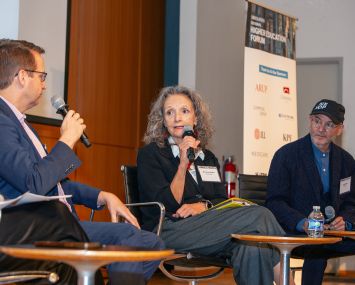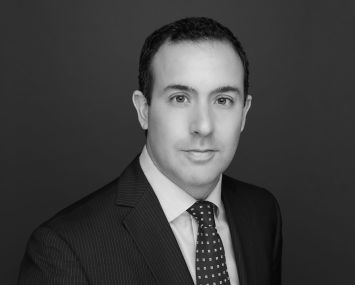Presented By: Nuveen Green Capital
Nuveen Green Capital Leads the Way on Sustainable Financing Through C-PACE
By Nuveen Green Capital March 7, 2022 7:00 am
reprints
Commercial Property Assessed Clean Energy, or C-PACE, has become a leading mechanism for the financing of clean energy improvements and other energy efficiency initiatives for commercial buildings. Partner Insights spoke with Jessica Bailey, president and CEO of Nuveen Green Capital, the leading provider of C-PACE financing solutions, to learn more about this crucial tool for generating substantial financial and energy savings.
Commercial Observer: Give us a general overview of Nuveen Green Capital.
Jessica Bailey: Nuveen Green Capital was known as Greenworks Lending until we rebranded at the start of 2022. Greenworks Lending was a company that my partner, Alexandra Cooley, and I founded in 2015 to create financial solutions for commercial building owners who wanted to upgrade their properties.
CO: And what is C-PACE?
JB: C-PACE is a type of financing, enabled by public policy passed in about 30 states, which allows a building owner to use their property to secure long-term financing to improve their building and enhance clean energy or finance green new construction measures. They repay the cost of those upgrades and measures as an assessment charge on their property tax bill over 20 or 30 years.
CO: What types of borrowers or projects can C-PACE be used for?
JB: Borrowers generally use C-PACE financing for three reasons. The first and most traditional is to retrofit old buildings. There are thousands of old buildings in the United States with equipment that’s not as energy efficient as what’s available today, or don’t comply with state or local requirements. So, C-PACE financing can be used to install more modern, energy-efficient equipment to reduce a building’s energy consumption. The second use is for ground-up new construction. In this case, C-PACE becomes part of the developer’s capital stack. The financing allows the developer to integrate more sustainable aspects into the new building’s design. C-PACE can also be used retroactively to recapitalize work that has been completed over the past several years that reduced energy consumption.
CO: What are some of the advantages C-PACE holds for borrowers over other lending vehicles?
JB: For one, it’s secured by the parcel of real estate rather than by the owner, so it really is non-recourse financing. If a building owner sells their building, the assessment transfers with the building. For tenant-occupied buildings, the assessment structure may allow pass-through, since the tenants are getting the benefit of the improved building. Also, C-PACE is really long-term, fixed-rate financing. This becomes an even bigger selling point for owners in a rising interest rate environment, which we’ll be facing shortly. We have a fixed-interest, fully amortizing 20-to- 30-year loan that is not subject to interest rate hikes. Owners also tend to like the security of it being prepayable at any time, and that longer period of time allows an owner to take advantage of expensive equipment that they can amortize.
CO: What sort of financial savings can owners or developers expect from participating in this, and how much of an environmental impact is made from these projects?
JB: We measure the energy savings from every transaction we close. We aggregate that data, and we’re able to publish a quarterly dashboard that demonstrates not just the benefits to the bottom line for our building owners, but also for the environment. The savings is highly variable because building owners access C-PACE financing for a wide range of measures. If you’re putting in a state-of-the-art building management system that allows the building to become a smart building, powering only the parts of the building that are being used, the energy savings can be tremendous.
CO: Why should companies turn to Nuveen Green Capital for their C-PACE financing?
JB: Nuveen Green Capital is the leader in the commercial PACE space. Greenworks Lending has been around since 2015, and I’ve been working in this industry since 2008, and was one of the architects of the original C-PACE policy framework we now lend through. Our team at Nuveen Green Capital is credited with leading on the expansion of the policy framework, and on ensuring that we’re bringing efficient capital into this marketplace. We led the first private and the largest public securitizations around C-PACE. We’re not only the leaders in terms of the policy development of C-PACE, but also in terms of the capitalization of the asset class.
CO: Does Nuveen Green Capital provide any other types of financing?
JB: We finance building owners who are acquiring rooftop solar to power their buildings. I also expect that we will announce a new loan offering to the commercial real estate market by the end of this year.
CO: As someone who’s been involved with lending for clean energy projects for quite some time, why does this all mean so much to you?
JB: I was working for the Rockefeller Brothers Fund in New York. As a program officer for the climate change program, I was one of the original funders of the initial C-PACE advocacy efforts. I helped to convene some of the early leaders, and was part of the team that put C-PACE on the map.
C-PACE emerged from the idea that you could create financial products that would allow folks who might not be thinking about how to save the planet to do so anyway, because the economics made sense. That’s really the whole idea behind C-PACE, Greenworks Lending and Nuveen Green Capital: to figure out how we can marry something that is smart from an environmental perspective with something smart from the bottom line of a building owner who is thinking about how they’re going to upgrade their facilities, or a developer who is forming their capital stack.
CO: Where are the greatest opportunities for C-PACE in 2022?
JB: I think we’re going to see C-PACE grow geographically. We’re already seeing it move into places like New York, Chicago, Philadelphia and Boston. Those were markets we couldn’t lend in a year ago, and now we can because the policy framework has been enabled there. Also, within the last year or so, we’ve been able to develop more partnerships with senior lenders to make sure that they are thinking the right way about how C-PACE comes into a capital stack. The partnerships we’ve developed with those senior lenders have enabled us to grow far more quickly and smoothly that we expected, and we anticipate that will continue over the next couple years.


